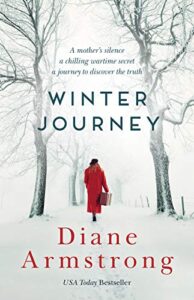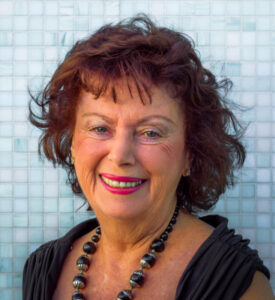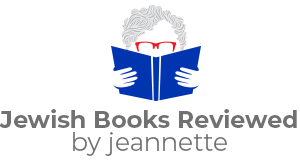By Diane Armstrong
 In 1941, on a sunny July morning, 1,500 Jews living in and around Nowa Kalwaria, Poland, were rounded up, forced into a wooden barn and set on fire. In the town itself, blood puddled in the streets as Jews were pulled out of shops and homes and murdered.
In 1941, on a sunny July morning, 1,500 Jews living in and around Nowa Kalwaria, Poland, were rounded up, forced into a wooden barn and set on fire. In the town itself, blood puddled in the streets as Jews were pulled out of shops and homes and murdered.
At the opening of this book, Halina Shore, a forensic dentist affiliated with coroner’s office in Sydney, Australia, knows nothing of Nowa Kalwaria. Although she was born in Poland, she and her mother, Zosia Szczencinska, immigrated to Australia in 1947 when she was nine.
Halina’s seemingly perfect life is falling apart. She ended an eight-year-old relationship with a married lover, Rhys Evans, editor of an influential tabloid. He published a damaging article about the coroner’s office where she works. She was quoted and reprimanded by her boss. Then, her court testimony failed to convince a jury that a man Halina believes to be guilty tortured and murdered a child.
Seeking a break, she accepts an invitation from the Institute of National Remembrance in Poland to join a team investigating a mass grave at Nowa Kalwaria. Their goal is to find out if the victims were killed by the Nazis – or by local Poles.
As the Polish-born president of the International Association of Odontologists, Halina is the perfect candidate for this team and has experience with similar investigations.
It also gives her a chance to explore her Polish roots. Her mother never wanted to talk about their life in Poland. With her mother’s recent death, she has only a box of mementos and papers that her mother saved. One of the documents is a letter from a Jewish woman (Esther Kleinman Kennedy) in New York making inquiries about the whereabouts of her infant niece, whose family lived in Nowa Kalwaria at the time of the massacre.
When Halina arrives in Poland, she finds a gray, rundown, depressing country. Everywhere — in conversation, on political billboards and graffiti — the word “Jew” is tossed around like an ordinary adjective.
But it is always used to signify the “unwanted other,” “the enemy” or “them.” The sports team playing against your favorite team? All Jews. The political candidate you oppose? A Jew. All the while the people she meets dismiss the idea that they are anti-Semitic.
In Nowa Kalwaria, she finds a community deeply divided about the research project. Supporters say that it’s time to resolve the issue. Opponents say that what is past is past and there’s no point in revisiting it. They claim the investigation is a conspiracy by Jews and Zionists to make the Poles and Nowa Kalwaria look bad.
Even within the research team there are divisions. One team member interprets every piece of evidence as showing the Poles couldn’t possibly be responsible for the horror of that summer day in 1941.
Halina soon comes to a dead end when she searched for records of her own past. She can’t find her birth certificate nor a marriage certificate for her parents. Various people doing research in different offices and archives point her to alternative sources of information. She finds information about Mrs. Kennedy’s niece – and through that research, she comes across a series of first-person accounts of what happened at Nowa Kalwaria.
Two people in Nowa Kalwaria provide support and comfort: Father Krzyztof Kowalczyk, the local Catholic priest who was born in Nowa Kalwaria and recently assigned to serve the community, and Roman Zamorski, a local history teacher who has been researching the lost Jewish communities of the area so that his students can understand that once Jewish and Polish communities co-existed peacefully.
Halina feels a quick kinship with Father Krzyztof who generously answers her questions as best he can. She, in turn, influences him. After he speaks out in a sermon urging his parishioners to act as Christians rather than being infected by the hatred and anti-Semitism in the community, he is murdered. Roman finds his body.
Shortly before Halina leaves Nowa Kalwaria, she stops to talk to the priest’s housekeeper, who was a young woman on the day of the massacre. She opens up about what she witnessed. Suddenly, all the pieces of the mystery – what happened that day, what happened to the Kleinman family, the past Zosia refused to talk about – fall into place.
The climax of WINTER JOURNEY is stunning. The twisted threads of the story that Armstrong has been weaving across time and continents come together in an explosion of revelations. The housekeeper describes a community swept by mob mania. She also tells of acts of life-saving courage in the midst of deadly danger.
This is a complex story told brilliantly. It doesn’t end with World War II; it carries forward decades and generations. It changes identities and lives. It releases festering secrets and guilts, and opens the door to healing.
Polish lawmakers in the past few years have voted for a bill that would fine or jail people who blamed Poland or Poles for Nazi atrocities committed on its soil during World War II, including the deaths of hundreds of thousands of Jews at Auschwitz-Birkenau.
WINTER JOURNEY shows the value of discussion and disclosure.
Most of all, WINTER JOURNEY shows that people are neither beasts nor angels; they are flawed beings who have choices about how they behave. Understanding the past, opens up the choices available today and in the future.
(Note: This is a work of fiction, however, there is an actual town named Góra Kalwaria, about 35 miles southeast of Warsaw. Jews were banned from settling there until the 1800s. It became one of the major centers of Hasidic Judaism and was home to the Ger dynasty. By the time the Germans invaded in 1939, Jews made up more than half the population. In 1940, a ghetto was established there with about 3,500 Jews. It was liquidated in February 1941, with its residents sent first to the Warsaw Ghetto and then to Treblinka in the summer of 1942. Only 35 residents of Góra Kalwaria survived the war.)
If you are interested in stories about courage during the Holocaust, you might be interested in THE DIARY KEEPERS.
The Author: Diane Armstrong (1939 – )
 Diane Armstrong was born Danuta Julia Boguslawski in Kraków, Poland. Her family moved to Lwów soon after the Nazi invasion. Her family immigrated to Australia on the SS Derna in November 1948. The family settled in Sidney. Her father was a dentist who had to requalify before he could practice in Australia.
Diane Armstrong was born Danuta Julia Boguslawski in Kraków, Poland. Her family moved to Lwów soon after the Nazi invasion. Her family immigrated to Australia on the SS Derna in November 1948. The family settled in Sidney. Her father was a dentist who had to requalify before he could practice in Australia.
She decided at the age of seven to become a writer.
She became a freelance journalist and has more than 3,000 investigative articles, first person stories, profiles and travel articles to her credit published in such outlets as Readers Digest, The Sydney Morning Herald, Vogue, Harpers Bazaar and other publications around the world. She has won a number of awards and grants for her work.
WINTER JOURNEY, published in 2004, was her first novel. It was followed by NOCTURNE (2008), EMPIRE DAY (2011), and THE COLLABORATOR (2019).
Her nonfiction works include MOSAIC; A CHRONICLE OF FIVE GENERATIONS (1998), and THE VOYAGE OF THEIR LIVES: THE STORY OF THE SS DERNA AND ITS PASSENGERS (2001).
She and her husband, a doctor and photographer, Michael Armstrong, live with their two children in Sydney.


